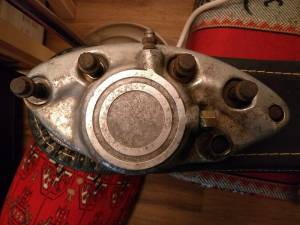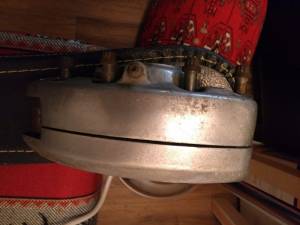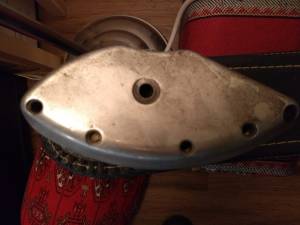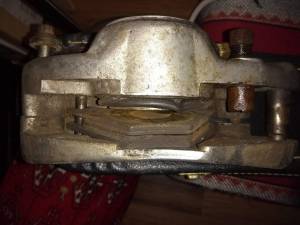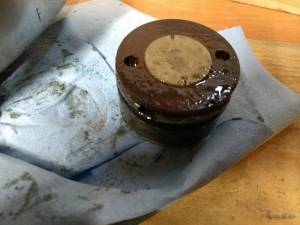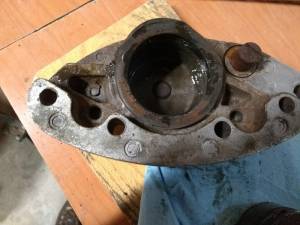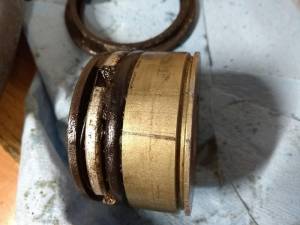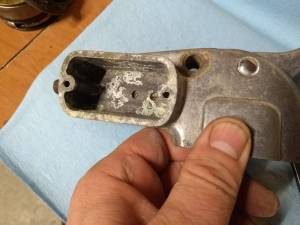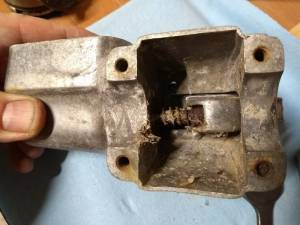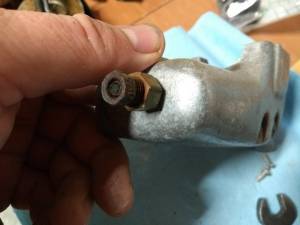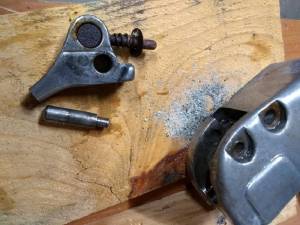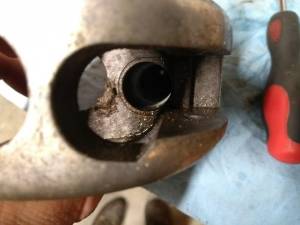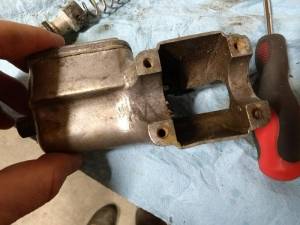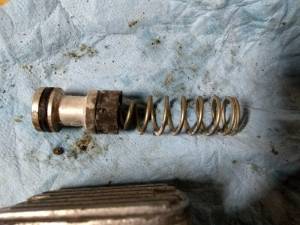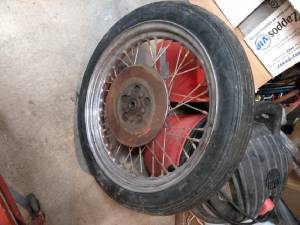IH: Wheels, Brakes & Tires - Sub-02M
1973 Banana Caliper Pics
1973 only front brake operation: 1)
This caliper doesn't operate like most other disc brake systems.
A caliper with a square section O-ring will self retract and the square rubber will hold piston's position pretty well.
Not so on a round O-ring caliper.
The 73 caliper's friction ring and wavy spring controls the piston retraction.
The caliper friction ring is held tight in the caliper bore and the piston moves inside the now stationary ring.
Upon release of the brake, the wavy spring retracts the piston. As pads wear, the friction ring travels in the caliper bore with the pad wear.
The ring dragging in the bore is what holds the piston position.
The original 73 front disc was dished at the mounting surface.
This dish was an offset that positioned the disc friction surfaces farther from the spokes and closer to the fork leg.
HD dropped that dish on replacement discs in 74.
Now the disc was dead flat and it came with a .065“ wide spacer that got sandwiched between the flat disc and the wheel hub that positioned the friction surfs of disc the correctly.
If you have a flat disc and no spacer that's the 1st thing to remedy.
With the flat disc, in order for the bolt heads to clear the lower leg, the disc was counter bored at the bolt holes to regain the lost bolt clearance.
The original bolts have thin heads (9/16” hex) and used external tooth star lockwashers. These were also very thin.
Scrape any paint from the caliper mating faces and pad seat. Paint here will 'creep'. That leads to a mushy brake feel.
(as if the 73 brake isn't mushy enough to begin with)
Check that the caliper has side clearance at the fork leg lug.
If your butting against the side of the tab, your caliper wont align over the disc.
Don't forget to include the anti rattle clip (a L73 upgrade). E73 didn't have them, if so equipped.
The caliper was hard anodized. That's the gray color. This 'hardcoat' is about .002“ thick per surface. This coating must not be removed or scored.
A bad friction ring can nick the coating at entry. This starts a cancer.
So getting the ring to go in (by crushing it's od smaller) without screwing up the hardcoat is important.
A too tight ring can wreck the caliper.
A too loose one allows the piston to 'walk in' if mileage between brake applications is great.
Too loose won't wreck your caliper but it may require pump up between applications.

